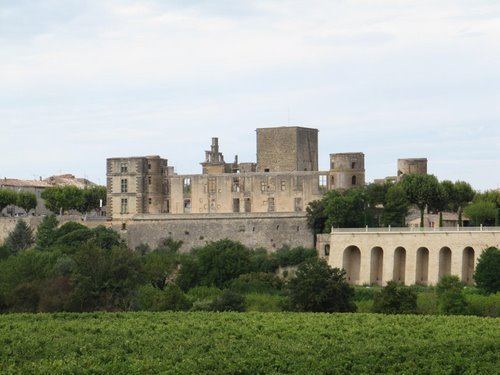INSEE/Postal code 84133 / 84240 Local time Friday 11:54 AM | Time zone CET (UTC+1) Area 41.3 km² Population 3,915 (2007) | |
 | ||
Weather 19°C, Wind NE at 8 km/h, 41% Humidity Points of interest Marrenon, Château la Dorgonne, Roux Reynaud Muriel | ||
La Tour-d'Aigues is a commune in the Vaucluse department in the Provence-Alpes-Côte d'Azur region in southeastern France.
Contents
- Map of 84240 La Tour dAigues France
- Geography
- Climate
- Middle Ages
- Renaissance
- Early Modern Period
- Museums and sights
- References
Map of 84240 La Tour-d'Aigues, France
Geography
The town is located at the south of the Grand Luberon, 5 km away from Pertuis. It is the capital town of the Pays d'Aigues.
Climate
La Tour d'Aigues is under the influence of the mediterranean climate characterised by hot and dry summers and mild winters.
Middle Ages
The town belonged to the counts of Forcalquier until the end of the 12th century, when it passed to the Sabran family through marriage, and later to the Agoults.
La Tour d'Aigues was partly destroyed in 1390 when facing the assault of Raymond VIII de Turenne. In addition to this, epidemics emptied the town of its population. This crisis allowed Fouquet d'Agoult to acquire new territories: le Tourel, la Bastidonne, Saint-Martin-de-la-Brasque and Cabrière d'Aigues.
The Templars also had an establishment at La Tour d'Aigues.
Renaissance
Raymond d'Agoult, Fouquet d'Agoult's son, died without an heir in 1505. His sister Jeanne, wife of Antoine de Bolliers,viscount of Reillane, inherited La Tour d'Aigues. They brought farmers from their lands in Piémont to enrich the land. The town then passed on to the d'Agoult de Sault in 1584. It then belonged to the Lesdiguières, to a certain Villeroy in 1617, and, finally, to the Brunys in 1719 who were unpopular rich merchants from Marseille.
La Tour d'Aigues faced a devastating plague in 1630 and 1631.
Early Modern Period
When the Villeroys went bankrupt, they were forced to sell the Renaissance castle built by Nicolas de Bolliers in 1550 to Jean-Baptiste Bruny. His son, Jérôme Bruny, turned the castle into a museum.
